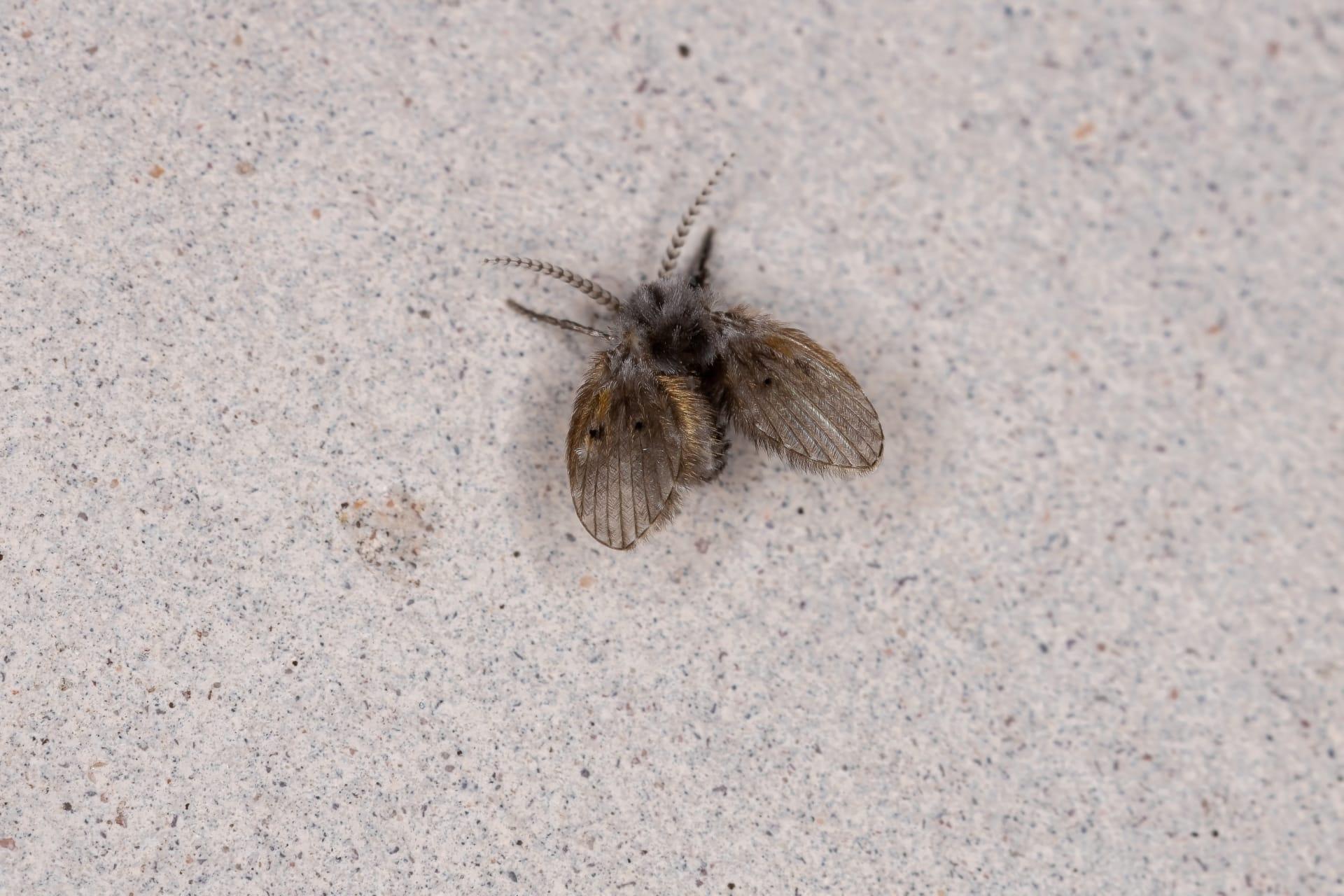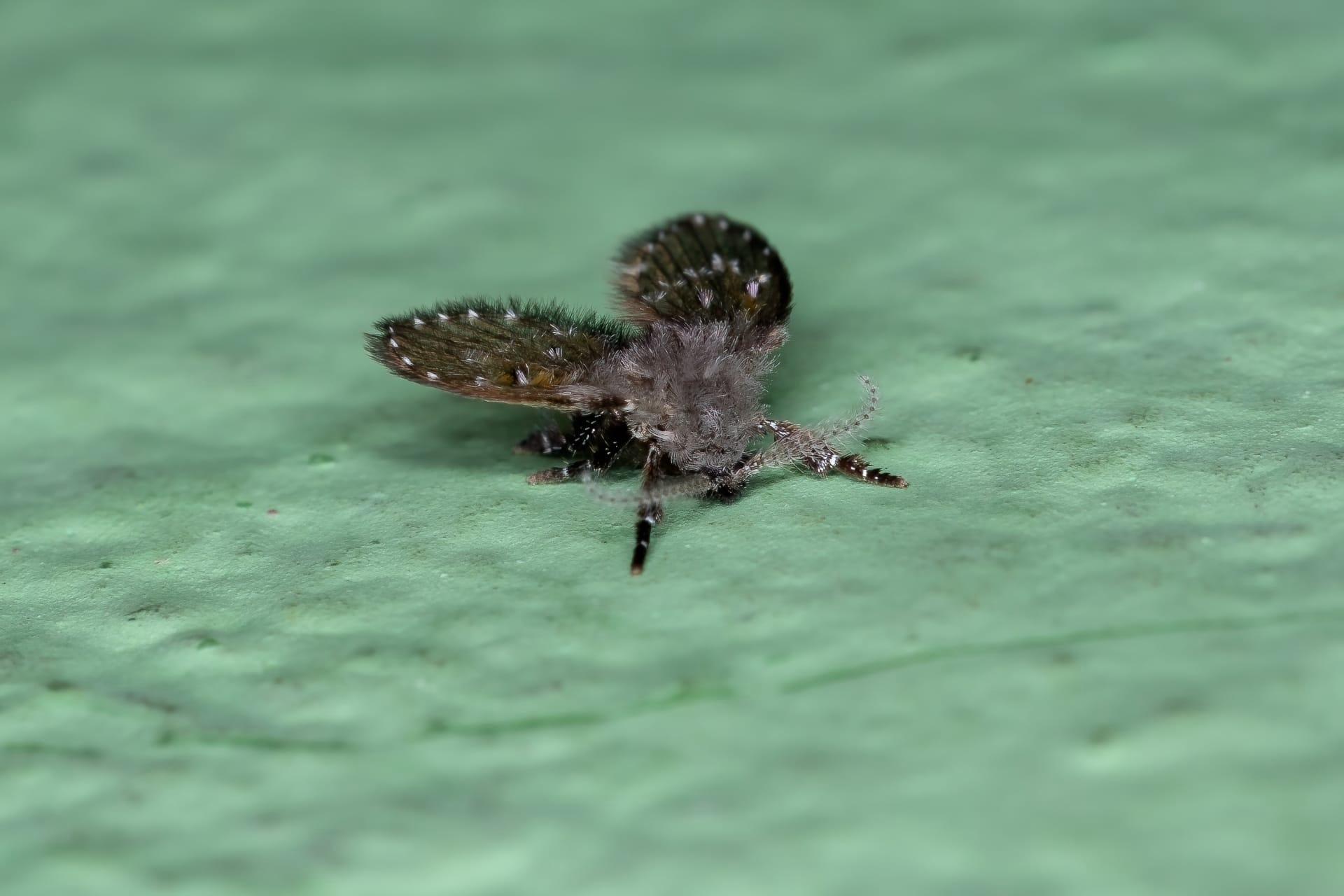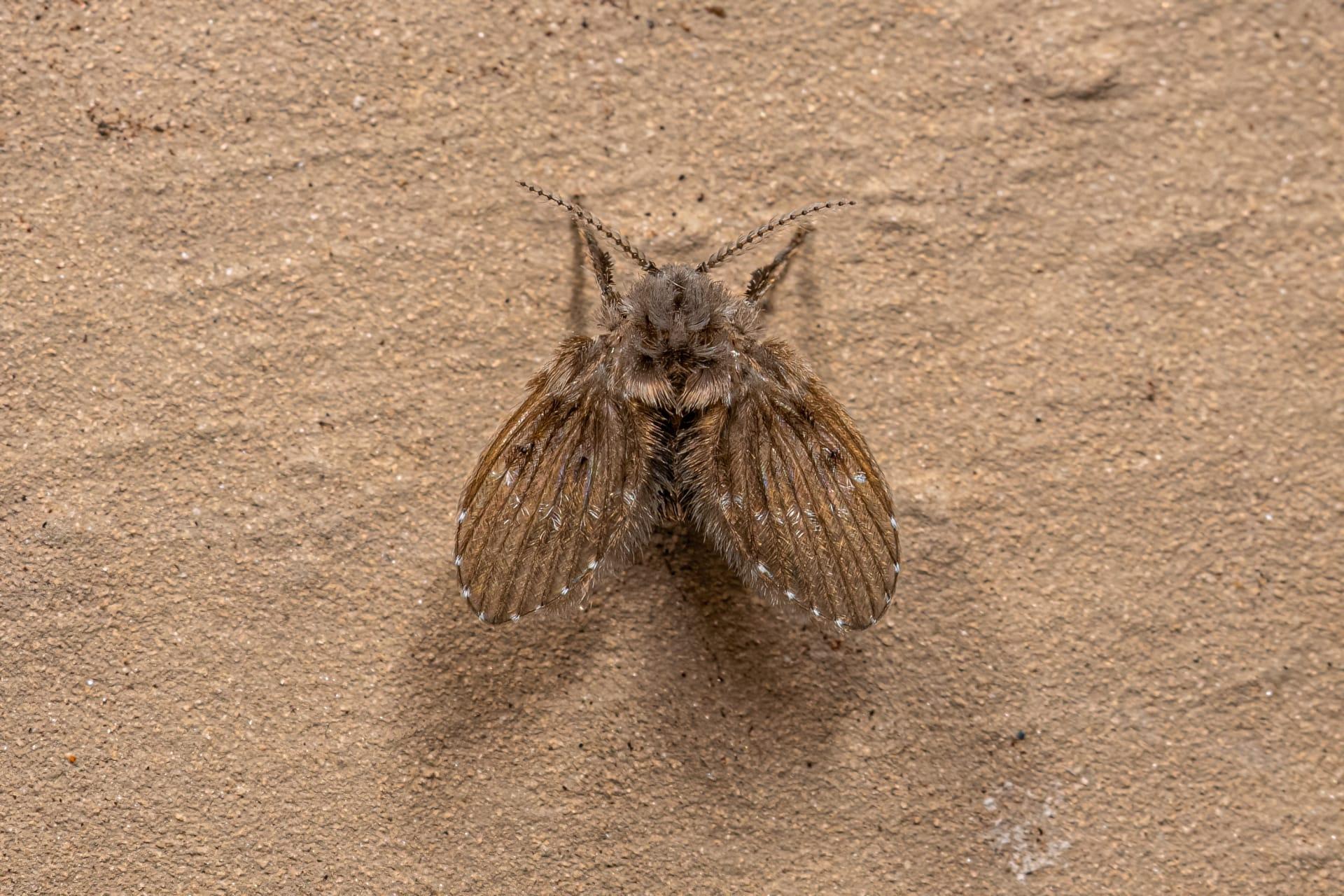1
Drain flies, also known as sink flies, sewer flies, or moth flies, possess a unique appearance that sets them apart from other common household flies. With a body length of about 1/8 inch (3 mm) and a wingspan of about 1/4 inch (6 mm), they are relatively small. What makes them particularly distinctive is their body and wings, which are covered in a dense layer of hair, giving them a fuzzy, moth-like appearance. This hairiness not only contributes to their moth-like look but also aids in their navigation through the air.
One intriguing aspect of drain flies is their breeding habits. They lay their eggs in the slimy, gelatinous film that often accumulates in drains, hence their name. A female drain fly can lay anywhere from 30 to 100 eggs at a time, and these eggs hatch into larvae within 48 hours. The larvae then live in this moist environment, feeding on the organic matter present in the slime for about 9 to 15 days before pupating. This rapid life cycle means that drain fly populations can increase quickly in suitable environments.

2
Drain flies are not just confined to drains; they can also thrive in other moist environments. For instance, they are often found in sewage treatment facilities, compost bins, and even in the soil of overwatered houseplants. These locations provide the perfect breeding ground due to the abundance of decomposing organic material, which is essential for their larvae's development. This adaptability to various moist habitats underscores their resilience and ability to colonize new areas.
Despite their nuisance in homes, drain flies are not known to transmit any diseases to humans. This is a significant distinction from other fly species, such as houseflies, which are known carriers of various pathogens. However, drain flies can contribute to asthma and allergies in sensitive individuals due to the small hairs and debris they can disperse into the air. Their presence can also indicate a hygiene issue, as they are attracted to stagnant water and organic buildup, often signaling a need for cleaning or plumbing maintenance.

3
Drain flies have a peculiar way of resting. Unlike many other flying insects, drain flies often rest with their wings held over their bodies, resembling a roof. This posture is not only distinctive but also serves a practical purpose. It protects their delicate, hairy bodies and aids in quick takeoffs when disturbed. Additionally, their unique wing pattern, featuring a series of light and dark bands, makes them easily recognizable even when at rest.
Another interesting fact about drain flies is their relatively short lifespan. An adult drain fly typically lives for about two weeks. However, during this short lifespan, they are very active, especially in the evening. They are not strong fliers and usually travel in short, erratic patterns, often staying close to the surfaces of walls or near their breeding sites. This short but active lifespan is crucial for their reproduction and spread in suitable environments.

4
The larvae of drain flies have a highly specialized diet. They primarily feed on the microscopic bacteria and organic particles found in the slimy films within drains and other moist areas. This diet makes them important decomposers in their ecosystem. The larvae are equipped with special adaptations to thrive in these environments, including a breathing tube that allows them to stay submerged in the slimy material while still accessing oxygen from the air.
Drain flies, despite their small size, can survive in a wide range of temperatures. They are most active and reproduce most rapidly at temperatures between 68°F to 86°F (20°C to 30°C). However, they can survive lower temperatures and become dormant until conditions become favorable again. This adaptability in temperature tolerance helps explain their presence in diverse environments and their ability to survive in various climates.

5
Drain flies play an essential role in the ecosystem. While they are often seen as pests in human environments, in nature, they contribute to the breakdown of organic matter, particularly in wetlands. Their larvae feed on decaying vegetation and other organic materials, aiding in the decomposition process and nutrient recycling. This makes them an integral part of the ecosystem, helping to maintain the balance in natural habitats.
Interestingly, drain flies are not known to bite humans or animals. Unlike some other fly species that feed on blood or can cause irritation with their bites, drain flies are harmless in this regard. Their mouthparts are not designed for biting; instead, adult drain flies feed on nectar and other plant fluids. This non-biting nature further distinguishes them from more aggressive fly species and highlights their role as decomposers rather than pests in the traditional sense.